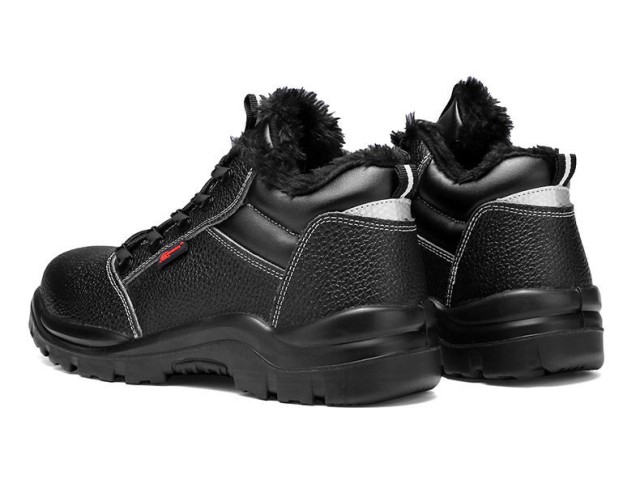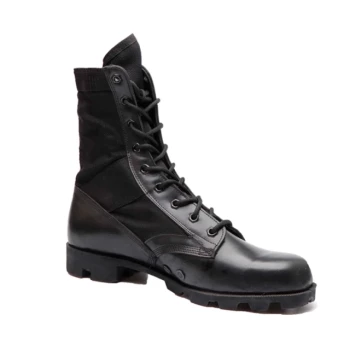Industrial workplaces demand rigorous safety standards, especially when it comes to protective footwear. Non-compliance can lead to severe penalties, workplace injuries, and operational disruptions. This guide breaks down OSHA’s requirements, key features of compliant footwear, and best practices for long-term compliance—helping employers and safety managers make informed decisions.
OSHA’s Role in Industrial Foot Protection
OSHA sets the baseline for workplace safety, including footwear standards under 29 CFR 1910.136. While OSHA doesn’t design specific footwear, it mandates that employers provide gear meeting ASTM F2413-18 testing protocols. Here’s what you need to know:
Key Requirements of 29 CFR 1910.136 Decoded
- Hazard-Specific Protection: Footwear must guard against impacts, compression, electrical hazards, and punctures.
- Material Standards: Leather uppers, non-skid soles, and built-in toe caps are mandatory.
- Employer Liability: Failure to comply can result in fines exceeding $100,000 for repeat violations, plus indirect costs like workers’ compensation claims.
How OSHA Standards Align with ASTM Testing Protocols
OSHA defers to ASTM standards for technical benchmarks. For example:
- Impact Resistance: Toe caps must withstand 75 pounds of force (ASTM F2412-18a).
- Electrical Hazards: Shoes must insulate against open circuits.
- Metatarsal Guards: Optional but recommended for high-risk environments (e.g., construction).
Did you know? OSHA considers ASTM compliance the "floor" for safety—many employers exceed these standards for added protection.
Choosing Compliant Safety Footwear
Selecting the right footwear involves matching OSHA/ASTM criteria to your workplace hazards.
Critical Features to Prioritize
-
Impact and Compression Resistance
- Look for ASTM F2413-18 labels confirming toe caps meet 75-lb force thresholds.
-
Electrical Hazard Ratings
- Essential for electricians or workers near live wires. Non-conductive materials prevent shock.
-
Metatarsal Guards
- Internal or external guards protect the foot’s top from crushing injuries—common in manufacturing.
Industry-Specific Considerations
- Construction: Prioritize puncture-resistant soles and ankle support for uneven terrain.
- Manufacturing: Focus on slip-resistant soles and metatarsal guards for heavy machinery zones.
Pro Tip: Involve employees in trials—comfort reduces non-compliance risks.
Maintaining Compliance Over Time
Compliance isn’t a one-time task. Regular inspections and documentation are key.
Inspection and Replacement Guidelines
- Monthly Checks: Look for worn soles, damaged toe caps, or insulation breaches.
- Replacement Triggers: Replace footwear every 6–12 months or immediately after damage.
Documenting Compliance for Audits
- Keep records of purchase orders, ASTM certifications, and employee training.
- Use digital logs to track inspection dates and replacements.
Example: A Midwest factory reduced OSHA fines by 80% after implementing a digital audit trail.
Final Thoughts
OSHA-compliant footwear is a blend of right selection, proactive maintenance, and thorough documentation. By aligning with ASTM standards and addressing industry-specific risks, employers can safeguard both workers and operational continuity.
Ready to upgrade your safety footwear? Partner with 3515—a trusted manufacturer for distributors and bulk buyers—to equip your team with compliant, high-performance footwear tailored to your industry’s needs.
Products You Might Be Looking For:
Explore OSHA-compliant steel toe work boots
Related Products
- Wholesale Customizable Suede Safety Boots - Puncture-Proof with Velcro Closure
- Athletic Safety Shoes with Dial Closure & Steel Toe for Wholesale & Custom Manufacturing
- Safety Footwear Wholesale Manufacturer for Custom OEM/ODM Production
- Wholesale Anti-Smash & Puncture-Proof Safety Shoes Custom Manufacturing for Brands
- Customizable Anti-Smash Safety Boots for Wholesale & Private Label Manufacturing
Related Articles
- Matching Men’s Work Shoe Safety Technologies to Workplace Hazards
- How to Choose Work Boots That Match Your Job Demands and Safety Needs
- How Safety Work Boots Engineer Protection: Features and Standards for Targeted Hazard Mitigation
- How to Choose Work Boots That Match Your Industry's Safety Needs
- How to Extend Work Boot Lifespan: Science-Backed Care for Safety & Savings



















